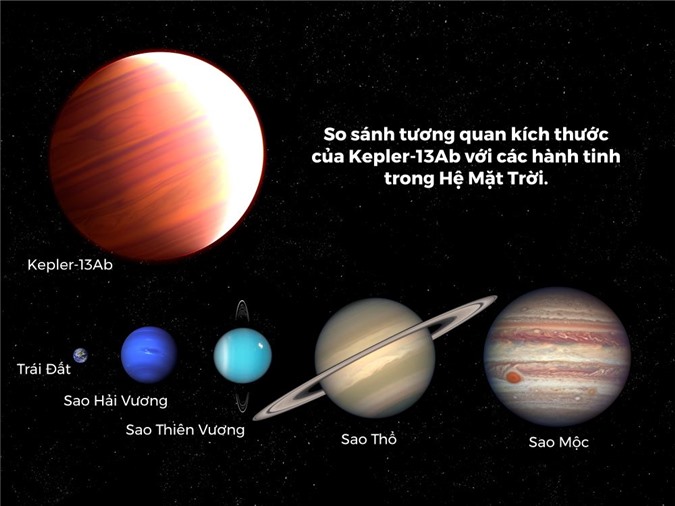Hell planet has snow even though the temperature is over 2,750 degrees Celsius
Using the Hubble Space Telescope , astronomers discovered an extraordinarily strange planet outside the solar system, with heavy snowfall even though temperatures were above 2,750 degrees Celsius.
- Discover a new dwarf planet about the size of a Pluto in the Solar System
- NASA declares the existence of the 9th planet in our Solar System
- Kepler detects three new exoplanets orbiting 'super-Earth'

From left: Kepler-13Ab alien with very close orbit of its star Kepler-13A, followed by binary star system: Kepler-13C orange dwarf and Kepler-13B star.(Photo: NASA.)
The alien planet is called Kepler-13Ab, a hellish planet that is influenced by the tidal lock with the host star, star Kepler-13A. It means that one side of it is always facing the mother star, which is illuminated regularly with temperatures above 2,750 degrees Celsius. The other half will be immersed in the eternal night and constantly show the rain of titanium oxide (component Main in sunscreen) dense as snow falls through the hot atmosphere.
This is one of the hottest planet ever discovered. These planets are called 'Hot Jupiter' and must have a layer of titanium oxide similar to absorb light and heat. But Kepler-13Ab is different, titanium oxide is not present in the day hemisphere but only appears at the night hemisphere. The cold winds here cause them to condense to form clouds and continuously fall below because gravity on this planet is 6 times higher than Jupiter.
Scientists call such a precipitation process 'cold trap' and this is the first time they sing it out on an alien planet.

Compare the size of Kepler-13Ab and the five planets in the Solar System.(Graphics: NASA, ESA, and A. Feild (STScI).)
Kepler-13Ab is 9 times heavier than Jupiter and is not a place suitable for life. But observing and studying the 'hot Jupiter' atmosphere is an experimental step to study the atmosphere of Earth-like rocky planets.
This is a study by a group of scientists at the University of Pennsylvania, USA and published in the Astronomical Journal.
You should read it
- 7 alien planet is more exotic than science fiction movies
- 12 interesting records of planets in the universe
- Kepler detects three new exoplanets orbiting 'super-Earth'
- Discovered 20 Earth-like planets that could contain life
- How many planets are there in the universe?
- Discovering a new planet with all the conditions to make a new place for humanity
 Discovered 20 Earth-like planets that could contain life
Discovered 20 Earth-like planets that could contain life PSR B1620-26b - What's the oldest planet on the top of the 'elders' in the universe?
PSR B1620-26b - What's the oldest planet on the top of the 'elders' in the universe? The streams of plasma sprayed from black holes can kill anything
The streams of plasma sprayed from black holes can kill anything The meteor glows and dissolves leaving a golden light trail winding in the sky of Japan
The meteor glows and dissolves leaving a golden light trail winding in the sky of Japan Is the speed of light slower than assumed in Einstein's theory of relativity?
Is the speed of light slower than assumed in Einstein's theory of relativity? Early in the morning, Venus and Jupiter will meet in the sky, don't miss this magical, rare moment!
Early in the morning, Venus and Jupiter will meet in the sky, don't miss this magical, rare moment!